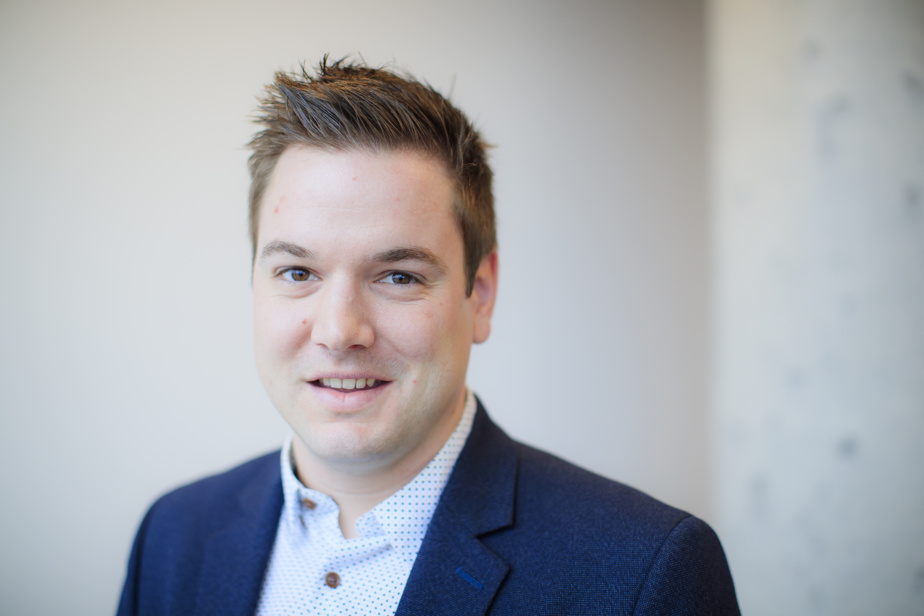Posted at 5:00 a.m.
Who can claim guaranteed returns of 30% every year? This is what the RESP guarantees for each deposit in the account, up to a maximum of $2,500 per year. Added to this are the returns of the product chosen for the plan, whether it is a mutual fund, an exchange-traded fund or a simple savings account. The choices are as varied as consumer tastes.
So why do without it?
“Repairing the steps while the kitchen is burning does nothing,” illustrates Pierre-Raphaël Comeau, expert advisor in wealth management for Laurentian Bank’s private management. You can’t plan for the long term if you don’t master the short term. »
“Between contributing to an RESP and paying off your credit card balance with a 21% fee, you definitely have to pay the credit card first,” he continues.
The RESP is a good strategy, but before you start contributing, Pierre-Raphaël Comeau suggests eliminating costly debts, except the mortgage, then building up an emergency fund. “Because if you don’t have any, you’re always going to have money to pay off on your credit card,” he explains.
The less rich must take advantage of the windfall
However, even buried in debt, a low-income family should absolutely take advantage of the Canada Learning Bond (CLB), say experts that The Press has consulted. Because the BEC does not require any investment.
Technically, a household whose net family income is less than $49,021 can open an RESP in the name of a child without paying a dollar and obtain the CLB. The government will pay $500 for the first year, then $100 until the child reaches the age of 15. The maximum paid out is $2,000.
A household with an income of $49,021 or less, who has no outstanding balance on their credit card, should also consider contributing $500. The child will be entitled to a bonus of $300, ie 60% subsidy on this first tranche of $500. A child growing up in a household whose income is between $49,021 and $98,000 will receive $225 as a gift, or 45% subsidy.
RRSP, TFSA or RESP?
“I have clients whose mother puts in $100 a month and whose father puts in $100 a month. We go to $ 2,400, it’s on autopilot, and it will continue for the next 14 years, says André Lacasse, financial planner at Services financiers Lacasse, on the phone. But I also have clients whose savings capacity does not allow them to maximize RRSPs, TFSAs and RESPs. »

PHOTO MARTIN CHAMBERLAND, ARCHIVES LA PRESSE
André Lacasse, financial planner at Services financiers Lacasse
They are not the only ones. In 2019, just over a third of Quebecers contributed to an RRSP, according to Statistics Canada. The median contribution amount was $3,000.
According to 2020 data collected by Statistics Canada, 69% of Canadian children under the age of 18 had money set aside for their post-secondary education. Of this number, about 85% of the children had an RESP. This is a significant increase from the 69% rate recorded in 2008 and 77% in 2013.
The average amount saved for children with an RESP was $14,520 at the end of 2019, compared to $11,429 at the end of 2013 (in 2019 dollars).
Parents who didn’t set aside money for their child’s post-secondary education said they didn’t have enough money (54%) or planned to help pay for education when it comes (40%).
“To the question: should we put everything in an RESP? I answer with the question: what are your goals? explains André Lacasse. And goals can change throughout life. »
André Lacasse suggests making choices based on your priorities.
For example, a couple whose two members have a defined benefit pension plan can easily put a hook on retirement, illustrates André Lacasse. “They have lifetime security. This couple could therefore use their savings to build up a small cushion in the TFSA for certain retirement tax strategies and contribute to the RESP. »
On the other hand, another self-employed couple without a pension plan will have to opt for another strategy, he says. “They may live 40 years in retirement. Planning prioritizes their safety after 60-65 years. The priority is the RRSP, to save money for retirement before the RESP. »
When children are under 6 years old
The three financial planners consulted agree that a household with young children under the age of 6 can afford to wait a few years before contributing to an RESP. Until when exactly? That the financial situation of the family has stabilized.

PHOTO ANDRÉ PICHETTE, LA PRESSE ARCHIVES
Pierre-Raphaël Comeau, Expert Advisor in Wealth Management for Laurentian Bank Private Management
If your child is in high school, five years separate the time you set aside your capital in an RESP and the time you can withdraw it. But if your child is 2 years old and you are taken by the throat, it is better that you settle your debts.
Pierre-Raphaël Comeau, Expert Advisor in Wealth Management for Laurentian Bank Private Management
“When the children go to daycare, I recommend going to the RRSP to reduce the family’s net income, because all the tax credits are determined on that,” says Charles Rioux Rousseau, senior financial planning analyst at RGP Wealth management. The Canada child benefit is higher, as is child assistance in Quebec. »
The tax refund could then be put into an RESP.
“It’s a good idea to open an account and put $25 a month into it to establish savings discipline and, if you’re a lower-income household, take advantage of the higher percentage of grants. »
Unused contributions can be rolled over later up to a maximum of $5,000 per year per child. To take advantage of the maximum subsidies, you must reach $36,000 in contributions per child. Parents could technically wait until the child is 8 years old, contribute $5,000 a year for seven years and $1,000 in year eight. You still have to have the means, of course…
Grandparents can also participate and open an RESP on behalf of the child. However, the total amount of annual subsidies always remains the same, regardless of the number of accounts opened.
The richest have the means, but…
There is no doubt that we must take advantage of the generosity of the plan, argues Pierre-Raphaël Comeau, but not put into the plan “all our savings, at all costs”. We must find the balance specific to each, because the RESP does not reduce the tax burden, reminds the expert.
“When you have a high annual income, there comes a time when you deprive yourself of having a 40% tax refund to make a 30% return with government grants. In this situation, it is better to take RRSPs and use the tax refund to contribute to the RESP. »

PHOTO MARTIN CHAMBERLAND, ARCHIVES LA PRESSE
“The return of 30% in subsidies, you will not have it until your child goes to CEGEP”, underlines Pierre-Raphaël Comeau. Above, pavilion of Cégep de Lanaudière in Terrebonne.
“The return of 30% in grants, you will not have it until your child goes to CEGEP,” he says. When you contribute $1 to the RRSP, $0.45 materializes. With this money that has just materialized, you can do other things. »
Borrow to contribute?
None of the three planners advise this strategy.
“If we can’t afford to put money in the RESP, we may not have the means to repay the loan,” warns Charles Rioux Rousseau. Going bankrupt because you got into debt to contribute to RESPs is not winning. »

PHOTO EDOUARD PLANTE-FRÉCHETTE, LA PRESSE ARCHIVES
Charles Rioux Rousseau, Senior Financial Planning Analyst at RGP Wealth Management
When you borrow to invest, there are risks, regardless of the investment vehicle you choose, reminds the financial planner. In a leveraged lending strategy, as here, it is preferable that the investment be cashable without restriction, as would be the case for a TFSA or a non-registered account.
“To consider borrowing to invest, you need to have a good relationship with money and excellent financial literacy,” says Charles Rioux Rousseau.
“If I get a client into my office who doesn’t have a penny in their account, because the payroll is spent every week, and I offer to borrow $5,000, that will be good for me. I’m going to have both a loan from the client and a new RESP,” says André Lacasse, who specifies that he never recommended an RRSP loan either.
“However, in the interest of this client, I should rather advise him to put the amount of the loan he would have to repay each month, ie $200, in an RESP. He could do it by direct deposit. It will be win-win for the customer. He will not pay interest and will have developed a saving habit. »

PHOTO MARTIN CHAMBERLAND, ARCHIVES LA PRESSE
Apart from rare exceptions, it is not advisable to borrow to invest in an RESP, according to our three experts consulted.
To lose or to gain
Here are some borrowing simulations to contribute to the RESP made from an Excel file provided by Charles Rioux Rousseau.
Let’s take a parent who borrows $5,000 and puts it in an RESP for 10 years without injecting any other money. If the $5,000 generates 3.3% interest plus the 30% grant, he will have $8,993 in the account. If the parent borrows at a rate of 4%, a rate he can expect with a mortgage margin, the difference he earns over 10 years is $1306.
But currently, rates for personal loans are much higher than 4%. The variable rate is around 8% and the fixed rate is around 10%.
So if the parent borrows $5,000 which generates 3.3% interest plus the 30% grant, he will earn nothing at all. He will lose money. In 10 years, he will be in the red by $1478 if he borrows at 8% and by $3261 if his borrowing rate is 10%.
A variable rate loan of 8% will need a return of 5.3% to generate an appreciation of $82 over 10 years.
If the loan is 10%, it takes a return of 7.2% to earn $48 in 10 years.
Now, here’s what you get using the Desjardins education savings calculator. If, instead of borrowing $5,000 over 10 years, the parent decided to put in $40 a month for 10 years? Still with returns of 3.3% and grants of 30%, the RESP would reach $7,795 after 10 years.
For the strategy to be more interesting, the loan should be made two or three years before retirement when the child is at the dawn of CEGEP. Except that will the parent have the means to repay $200 a month?
Charles Rioux-Rousseau, Senior Financial Planning Analyst at RGP Wealth Management
The parent must then use a home equity line of credit to finance themselves with a low rate. As soon as the child starts CEGEP, the parent repays the debt with the withdrawals that are supposed to be intended to pay for the child’s studies.
“Borrowing at 3.30% in this particular situation where we repay in two years when the child enters CEGEP, it can be a good deal if our overall financial situation is healthy. But borrowing at 10% is risky,” concludes Pierre-Raphaël Comeau.
Learn more
-
- $9167 for girls and $9613 for boys
- This is the average withdrawal from RESPs in 2020. We have observed that for the past 10 years, girls have always withdrawn lower amounts than boys.
Statistics Canada

